Napoleon's Spain
Friday, April 25, 2025
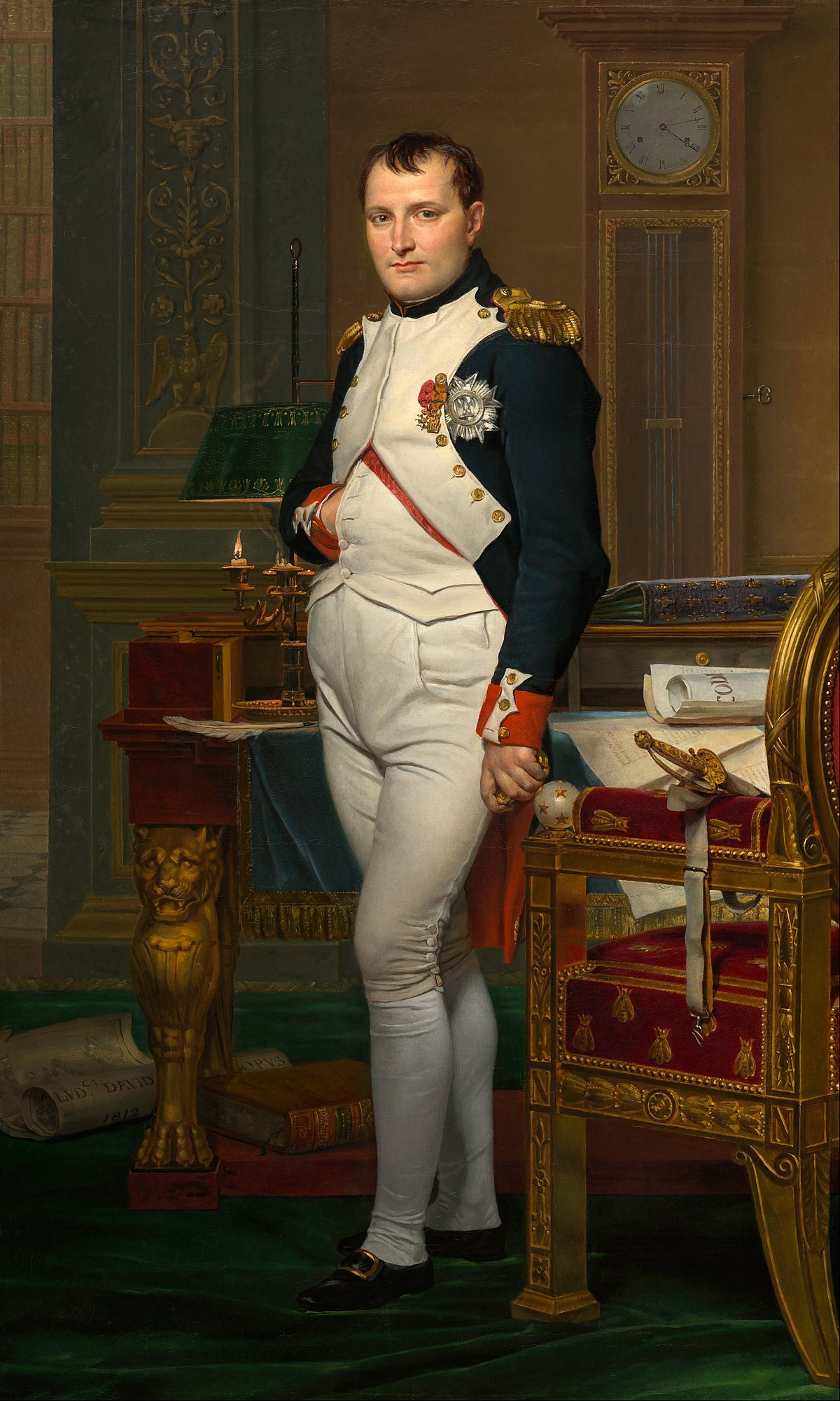 In the year 1810, José I, brother of Napoleon Bonaparte, the victorious French general who ended up proclaiming himself emperor until his defeat by the British and Prussians at Waterloo, reigned in Spain. In the year 1810, José I, brother of Napoleon Bonaparte, the victorious French general who ended up proclaiming himself emperor until his defeat by the British and Prussians at Waterloo, reigned in Spain.
Spain had suffered the French invasion, from which it would manage to free itself in 1814 at the end of the War of Independence and which, according to many analysts, was the beginning of the end for Napoleon.
During this French occupation, the Spanish government sponsored by Paris wanted to administratively reorganise the entire country, and among other changes, wanted to impose a division by provinces very different from the current one.
The design was carried out by José María de Lanz and Zaldívar, who was inspired by the administrative division of France. The idea was to take advantage of natural features and try to make each province approximately the same size.
Lanz did away with historical names and wanted each province to be named after the dominant river or rivers. Thus, there were Ebro and Jalón, Guadalquivir Bajo, Duero and Pisuerga, Segura or Miño Alto.
In addition, new, not necessarily traditional, capitals were established: towns such as Astorga, La Carolina, Ciudad Rodrigo or Jerez became provincial capitals.
Napoleon's Map of Spain
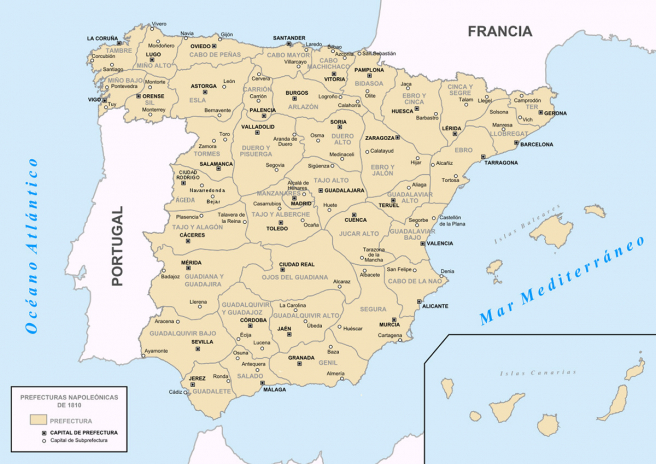
The problem is that this method ignored historical realities and decisions were made such as dividing Zaragoza into two provinces. Finally, the end of the French occupation put an end to this scheme and in 1833 one very similar to the current one would be adopted.
VIDEO IN ENGLISH
 0
Like
Published at 10:20 PM Comments (0)
0
Like
Published at 10:20 PM Comments (0)
Museum of Torture in Toledo
Friday, April 18, 2025
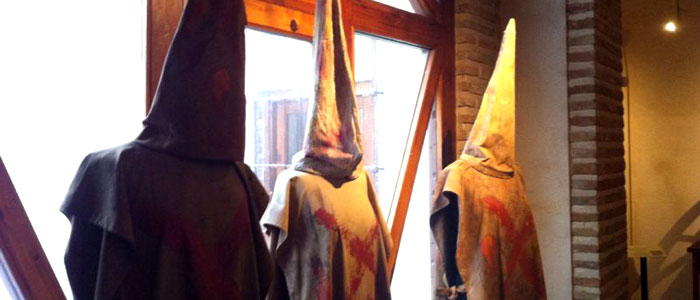
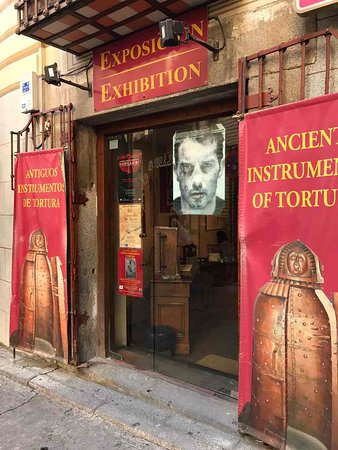 Toledo, Spain is known as the City of Three Cultures, as Christian, Jewish, and Muslim communities have coexisted within its stone walls. The fortified city in Castilla-La Mancha was also the site of fierce persecution during the Spanish Inquisition. On an unassuming corner on the labyrinthine streets of the old city, the Museo de la Tortura displays artefacts from this dark period in the nation’s history and that of other European powers. Toledo, Spain is known as the City of Three Cultures, as Christian, Jewish, and Muslim communities have coexisted within its stone walls. The fortified city in Castilla-La Mancha was also the site of fierce persecution during the Spanish Inquisition. On an unassuming corner on the labyrinthine streets of the old city, the Museo de la Tortura displays artefacts from this dark period in the nation’s history and that of other European powers.
The exhibit is spread across five rooms, with insight on the Spanish Inquisition’s origins as well as its methods for torture and execution. Plaques throughout the museum offer descriptions of the tools in both English and Spanish and provide some historical background for the brutal practices of the Inquisition.
While the museum is home to infamous medieval devices like the rack and the iron maiden, it boasts a collection of lesser known instruments of torture. Pieces like the choke pear and chair of Judas demonstrate the sadistic inventiveness at work within the Inquisition, with many contraptions designed to punish specific offences or prolong suffering before death.
Iron Maiden 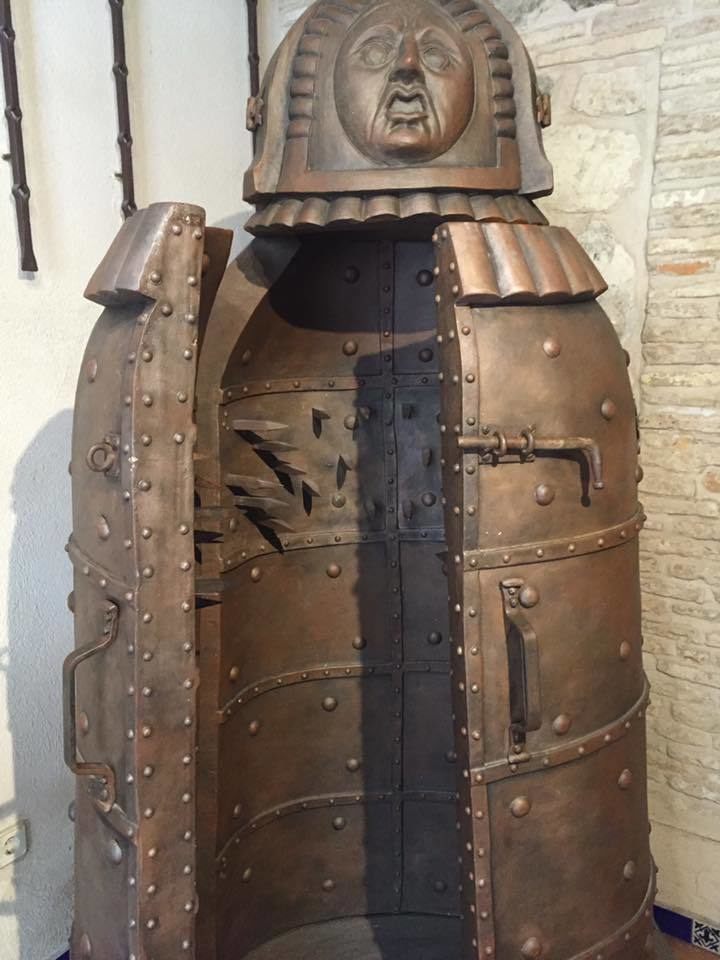
Interrogation Chair 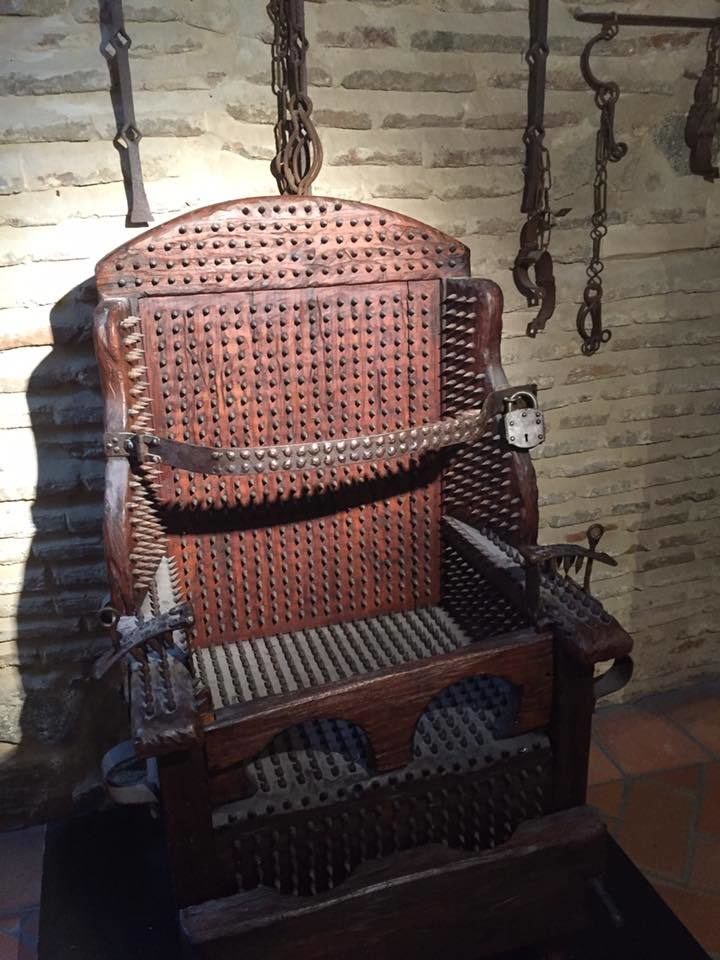
Tools like the thumb vice were often used to force a confession or repentance, inflicting pain without risking death on the victim. The interrogation seat was lined with spikes that could be heated before a prisoner was locked into place. Some pieces like the Garrote Vil were used long after the Inquisition had ended. The neck-crushing collar was used in Spain as recently as the 1970s.
Judas seat 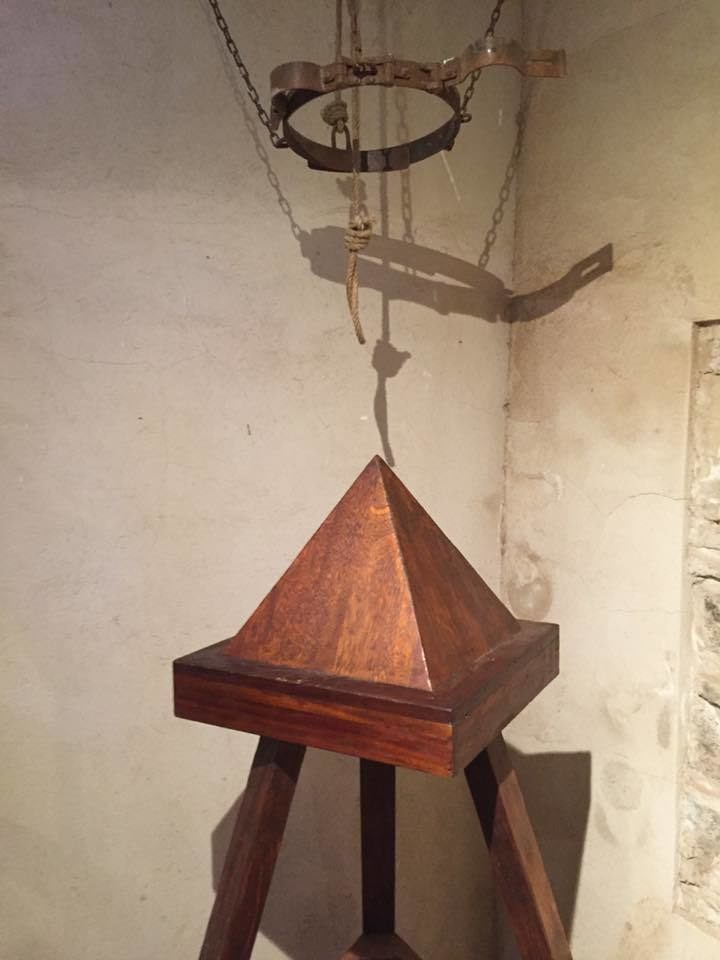
Shame mask 
The side room features contraptions designed for public ridicule, including a heavy wooden barrel held on the shoulders of those accused of drunkenness. The iron shame masks were intended to humiliate the wearer, but also provided a burdensome strain on the prisoner’s body. The museum also displays executor’s hooded garb and axe as well as the tattered Sambenito, a garment worn by prisoners during their public auto-da-fé.
The museum presents its artefacts without sensationalising torture and provides a stark look at the social conditions of Inquisition-era Spain.
 1
Like
Published at 7:30 PM Comments (1)
1
Like
Published at 7:30 PM Comments (1)
The Capirote at Easter
Friday, April 11, 2025
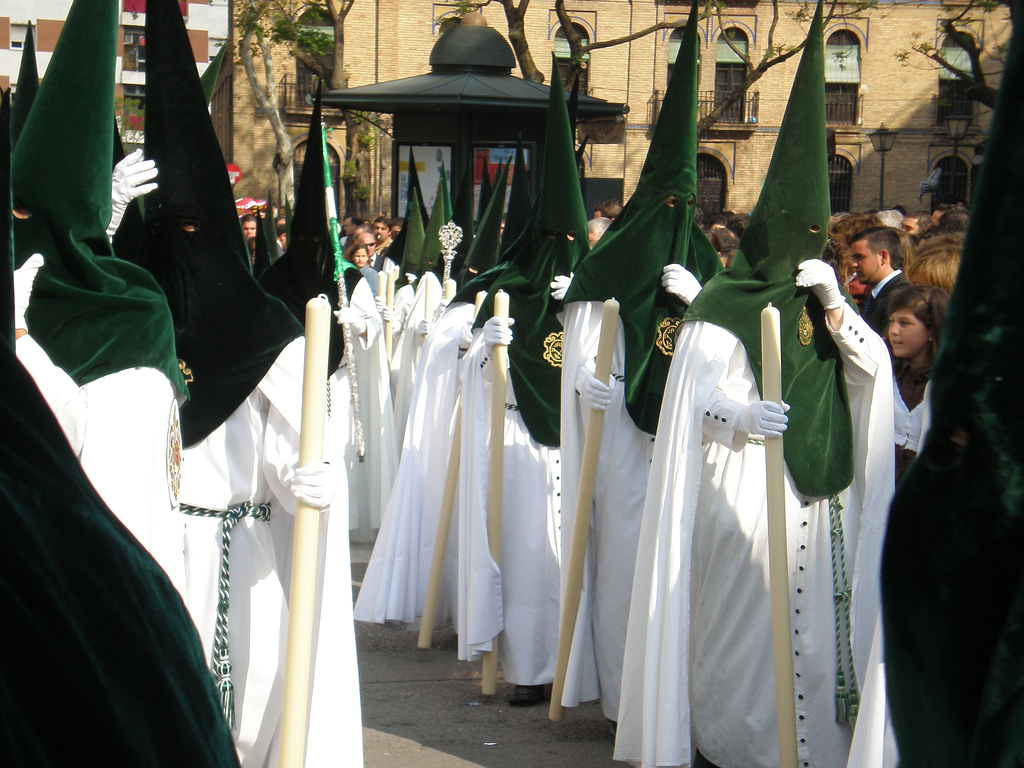
A capirote is a pointed conical hat that is used in Spain. It is part of the uniform of some brotherhoods including the Nazarenos and Fariseos during Easter processions and reenactments in some areas during the Holy Week in Spain.
Historically the flaggelants are the origin of these current traditions, as they flogged themselves to do penance. Pope Clemens VI ordered that flagellants only under control of the church could perform penance; For this he decreed "Inter sollicitudines". This is considered one of the reasons why flaggelants often hide their faces.
The use of the capirote or coroza was proscribed in Spain and Portugal by the Holy Office of the Inquisition. Men and women who were arrested had to wear a paper capirote in public as sign of public humiliation. The capirote was worn during the session of an 'Auto-da-fé'. The colour was different, conforming to the judgement of the office. People who were condemned to be executed wore a red coroza. Other punishments used different colours and drawings to show the punishment to be received.
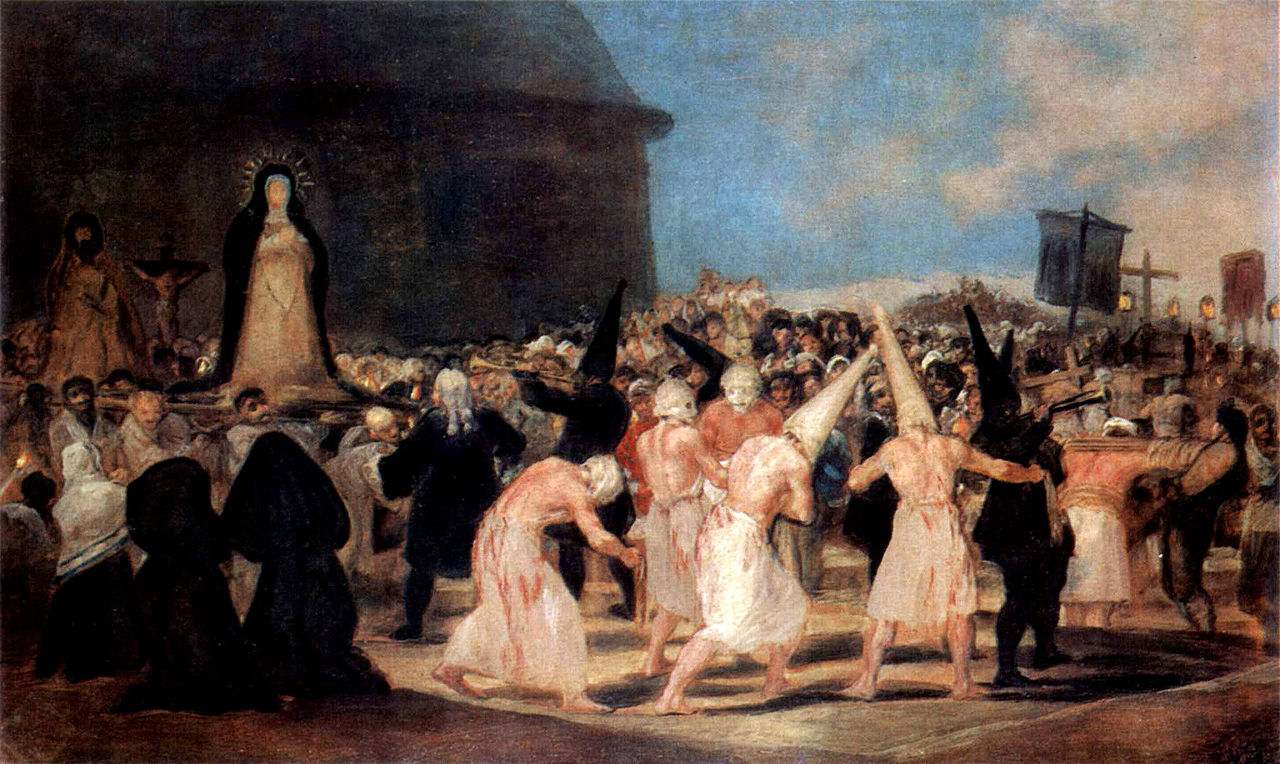
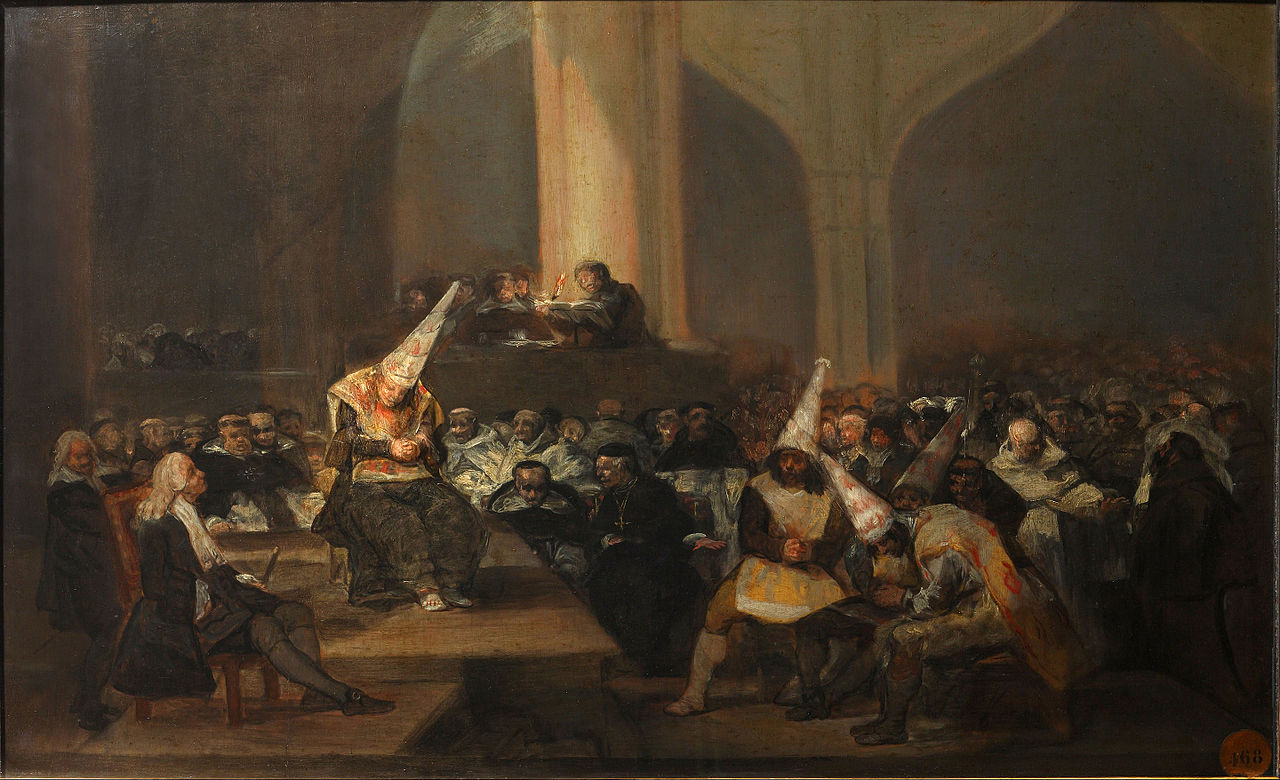
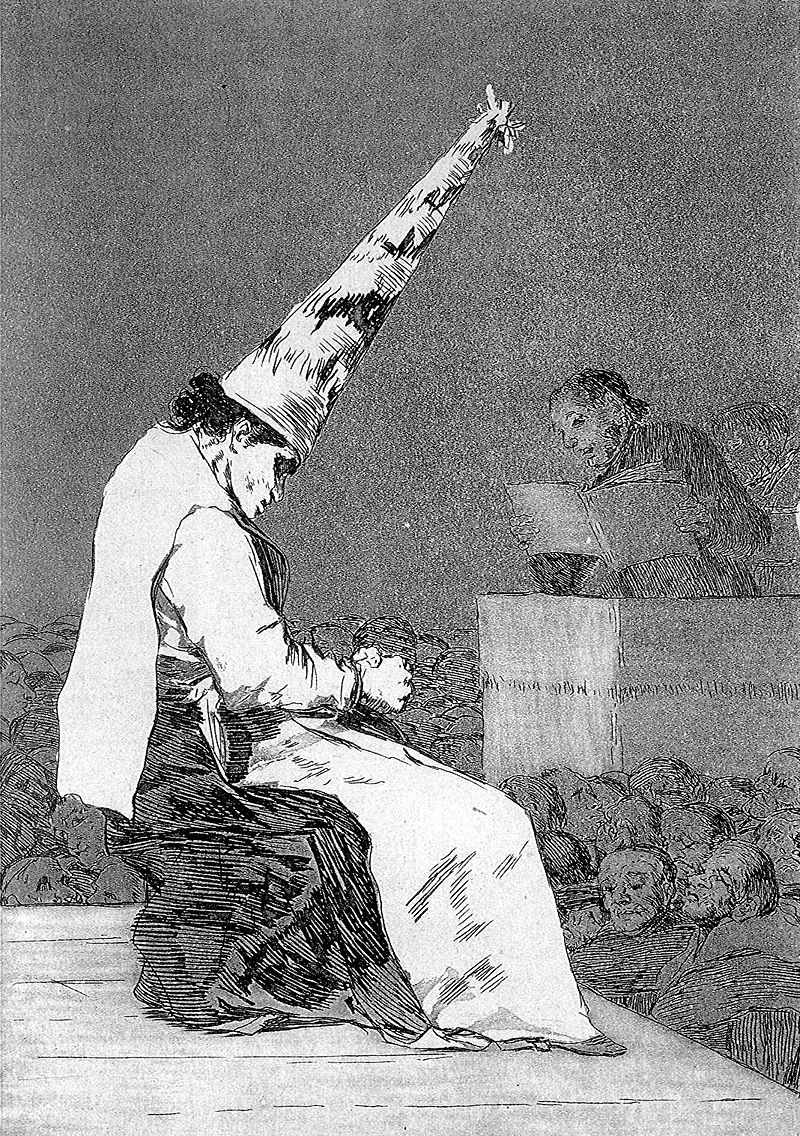 When the Inquisition was abolished, the symbol of punishment and penitence was kept in the Catholic brotherhood. However, the capirote used today is different: it is covered in fine fabric, as determined by the brotherhood. Later, during the celebration of the Holy Week/Easter in Andalusia, penitentes (people doing public penance for their sins) would walk through streets with the capirote. The capirote is today the symbol of the Catholic penant: only members of a confraternity of penance are allowed to wear them during solemn processions. Children can receive the capirote after their first holy communion, when they enter the brotherhood. When the Inquisition was abolished, the symbol of punishment and penitence was kept in the Catholic brotherhood. However, the capirote used today is different: it is covered in fine fabric, as determined by the brotherhood. Later, during the celebration of the Holy Week/Easter in Andalusia, penitentes (people doing public penance for their sins) would walk through streets with the capirote. The capirote is today the symbol of the Catholic penant: only members of a confraternity of penance are allowed to wear them during solemn processions. Children can receive the capirote after their first holy communion, when they enter the brotherhood.
Historically the structure is called the capirote, but the brotherhoods cover it with fabric together with their face, and the medal of the brotherhood that is worn underneath. The cloth has two holes for the penant to see through. The insignia or crest of the brotherhood is usually embroidered on the capirote in fine gold.The capirote is worn during the whole penance. In Sevilla, it is not allowed to enter the cathedral without the capirote.
In New Orleans during the period between the Rebellion of 1768 and the abolishment of the Spanish cabildo, the more risqué Mardi Gras celebrations of the traditionally French Catholic residents were strictly curtailed by incoming Spanish clergy. The anti-Catholic 'second' Ku Klux Klan that arose at the beginning of the twentieth century may have modeled part of their regalia and insignia on the capirote and sanbenito as a sardonic nod to the enforcement of these restrictions on masquerades a century earlier.
 0
Like
Published at 2:29 PM Comments (0)
0
Like
Published at 2:29 PM Comments (0)
Spam post or Abuse? Please let us know
|
|